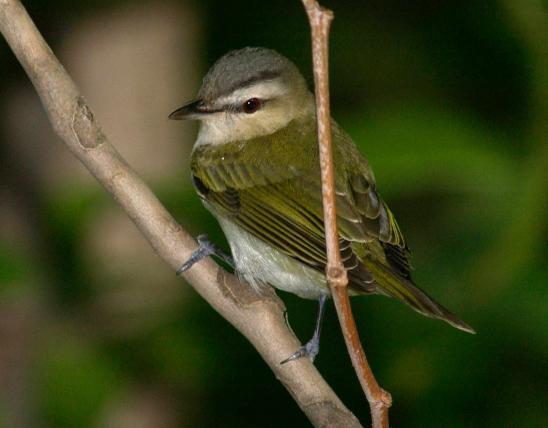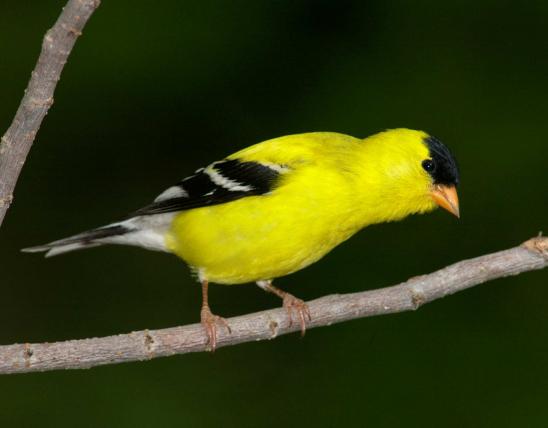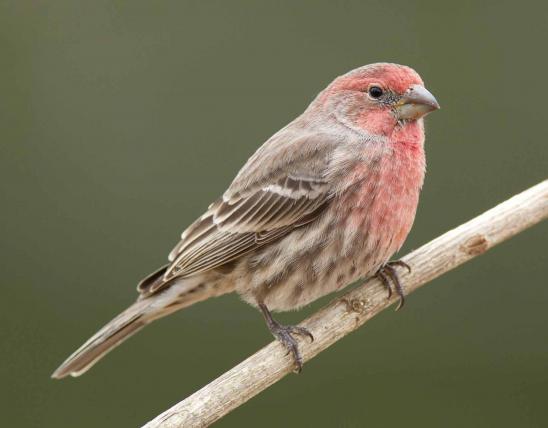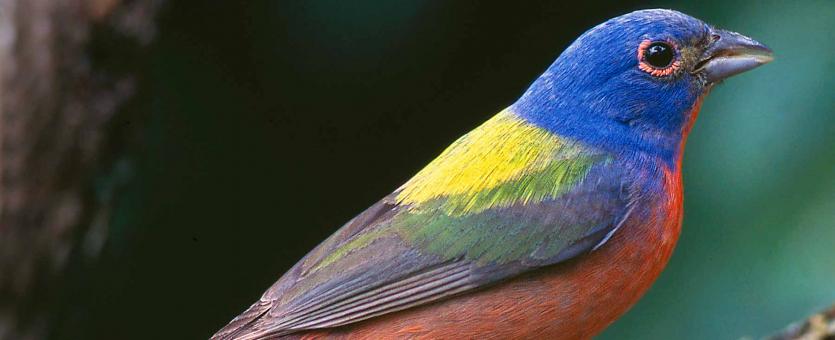
Adult male painted bunting upperparts are blue, with a lemon-green back, green wings, reddish rump, and red eye ring. Underparts are bright red. The female is green above and pale green below. First-year males look like females, but the green is much brighter and may have flecks of red and blue in it. The song is a soft, varied, musical warble. The call is a chip or chit.
Key identifiers:
- Sparrow-sized bird with a thick, conical, gray bill.
- Males are unmistakable: blue head, red belly and rump, green back, dark wings.
- Females lime-green, bright above, paler below.
Similar species: Adult male painted buntings can’t be confused with anything else. The lime-green females are colored much like a female scarlet tanager, but tanagers are larger and have narrower bills. Other female buntings that occur in Missouri are light brown (indigo bunting) or buffy, tan, and pale blue (female lazuli bunting, rare in Missouri). Distinguish female painted buntings from other small greenish birds, such as warblers, flycatchers, and vireos, by the heavy, conical bill shape. (Birders who travel to southern Arizona and New Mexico look for a close relative, the varied bunting; the purple and red males of that species, and many other colorful and exotic-looking birds, gather in that region, making the trip worth the price for many.)
Length: 5½ inches.

Southwest Missouri.
Habitat and Conservation
Birds as beautiful as this can turn birding into an addiction! It’s worth a special trip just to see one. Grab your binoculars and visit the tangles and thickets in southwestern Missouri; once you find the appropriate habitat, you will eventually see one. Try looking in the shrubby growth along lakes, just above the high-water mark. Bull Shoals Lake is a good place to try. Also look for them in thickets on glades and in old pastures.
Food
The basic diet comprises seeds, especially grass seeds, plus seeds of pigweed, spurges, St. John’s-worts, docks, roses, and more. Like many other bird species, they eat many more insects during summer breeding season, when the growing young need extra protein. Biologists reason that the seasonal bloom of grasshoppers, caterpillars, spiders, beetles, cicadas, and so on, plus relatively uncrowded territory for nesting, is the reason many otherwise neotropical species migrate to seasonally fluctuating continental climates like ours.
Status
A Missouri species of conservation concern.
As summer resident, rare in southwest Missouri, and accidental elsewhere. As a migrant, accidental. It is not abundant anywhere in the state. Male painted buntings are highly territorial and physically attack other males. This behavior makes them rather easy to trap, and illegal trade of these animals is one reason their populations have been declining. Habitat loss from human development is another reason for the decline. Internationally, they are ranked as Near Threatened.
Life Cycle
Painting buntings nest amid dense foliage in scrubby places. The female builds a cup nest of plant stems, leaves, and other materials, bound together with spider webbing, usually fixing it on a shrub or other fairly low plant. A clutch comprises 3 or 4 eggs, which are incubated 11 or 12 days. In another 9 days, they are ready to start leaving the nest. There can be 1–3 broods per year. A painted bunting can live for at least 12 years. They are found in Missouri May–September, then they migrate to southern Mexico or Central America for the winter.
Human Connections
This species, dismayingly, is trapped in large numbers in many parts of its range and sold as a cage bird, even though international laws ban the sale of wild-caught birds from country to country, and many countries (including ours) ban the sale of wild-caught birds in pet shops. Male painted buntings, especially, are targeted, and in Florida the species has declined as a result. Wildlife trafficking is a serious threat to many of the most beautiful species in the world, including many parrots; education, and political and social willpower is needed to end it.
Ecosystem Connections
Birds that migrate play a role in every region they pass through. This species helps limit insect populations in its breeding territory. The eggs and young are especially vulnerable to a host of predators from snakes to mammals to other birds.
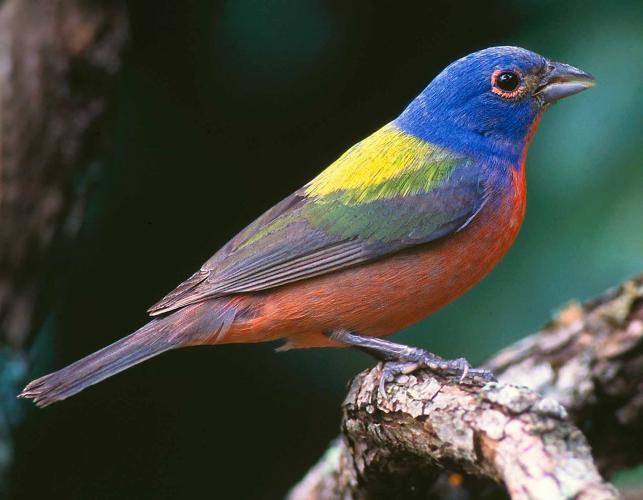
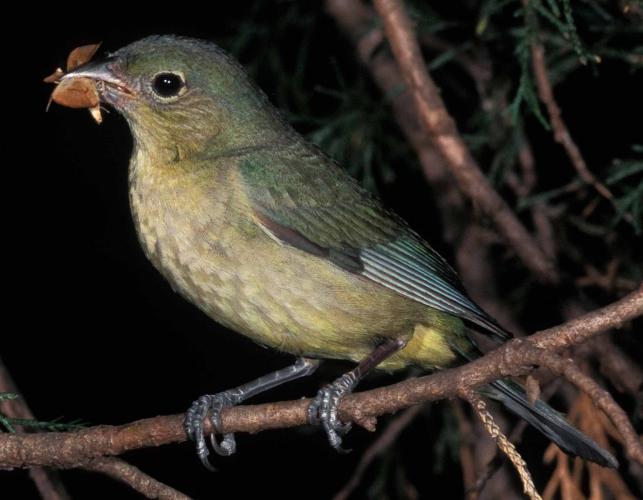


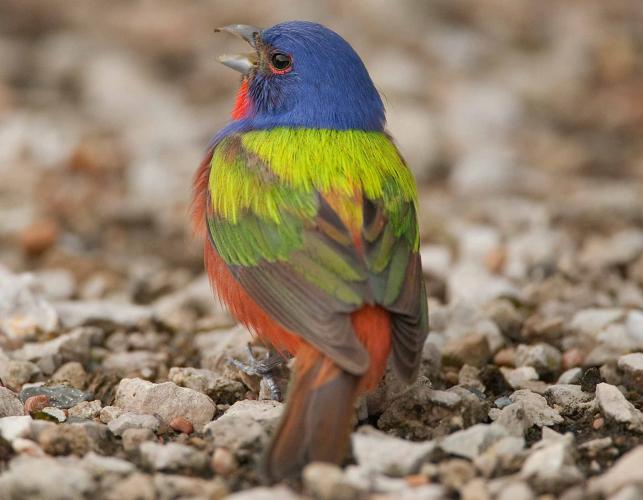



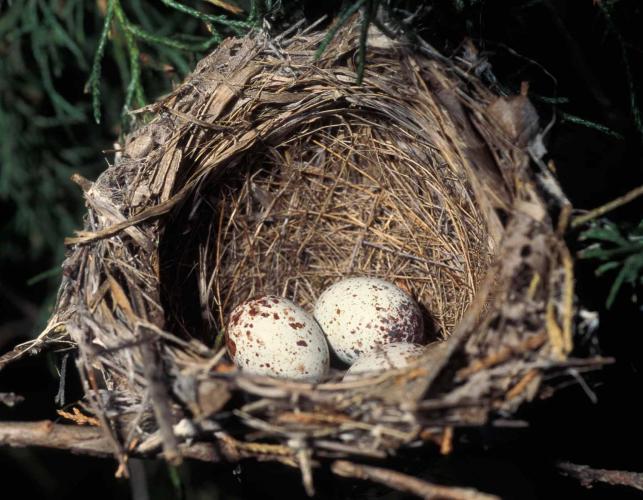
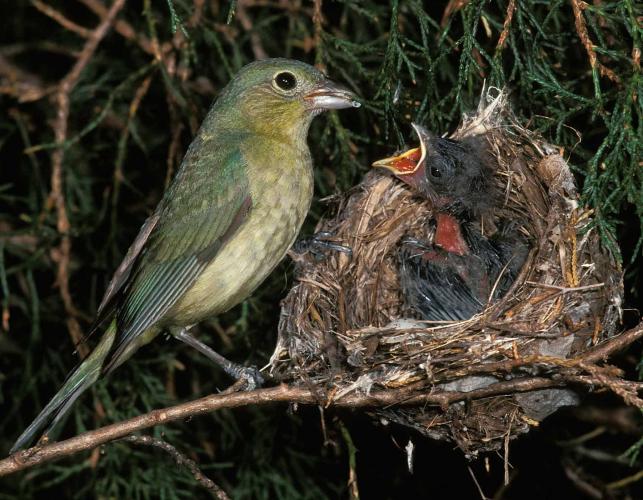

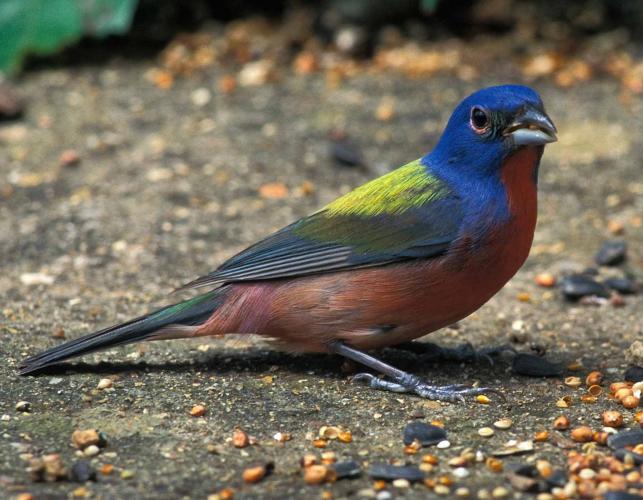




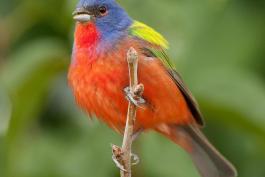









About 350 species of birds are likely to be seen in Missouri, though nearly 400 have been recorded within our borders. Most people know a bird when they see one — it has feathers, wings, and a bill. Birds are warm-blooded, and most species can fly. Many migrate hundreds or thousands of miles. Birds lay hard-shelled eggs (often in a nest), and the parents care for the young. Many communicate with songs and calls.

























